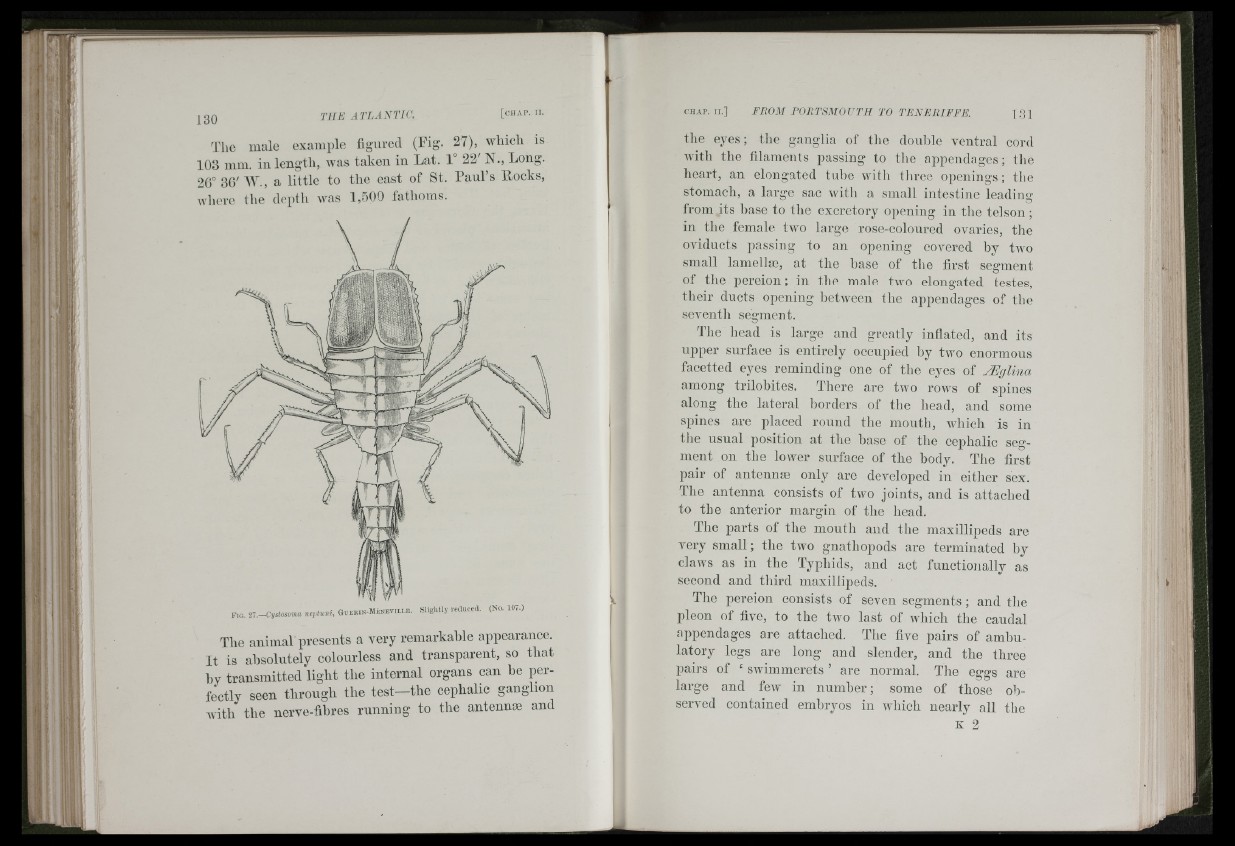
ill
130 THE ATLANTIC. [ c i i i v r , n .
The male example figured (Fig. 27), wliicli is
103 mm. in length, was taken in Lat. 1 22' N., Long.
2G° 36' AV., a little to the east of St. Paul’s Bocks,
wliore the depth was 1,500 fathoms.
P iG _ 27.— C y s to som a n e p tu n i , G u e r i n - M e n e v i l i . e . Slightly reduced. (No. 107.)
The animal presents a very remarkable appearance.
It is absolutely colourless and transparent, so that
by transmitted light the internal organs can he perfectly
seen through the test—the cephalic ganglion
Avith the nerve-fibres running to the antenme and
CIIAP. I I .] FROM RORTSMOUTI I TO TENERIFFE. 31
tlie eyes; tlie ganglia of the double ventral cord
Avith the filaments passing to tlie appendages; tlie
heart, an elongated tube Avith tliree openings; tbe
stomach, a large sac Avitb a small intestine leading
from its base to tbe excretory opening in the tel son;
in the female tAvo large rose-coloured ovaries, the
oviducts passing to an opening covered by tAvo
small lamellai, at the base of tbe first segment
of the pereion; in tlie male two elongated testes,
tbeir ducts opening betAveen the appendages of the
seventh segment.
The bead is large and greatly inflated, and its
upper surface is entirely occupied by two enormous
facetted eyes reminding one of the eyes of JEglina
among trilobites. There are two roAvs of spines
along the lateral borders of the bead, and some
spines are placed round the mouth, Avliicli is in
the usual position at the base of the cephalic segment
on the loAver surface of the body. The first
pair of antennae only are developed in either sex.
The antenna consists of two joints, and is attached
to tbe anterior margin of the head.
The parts of the mouth and the maxillipeds are
very small; tbe two gnatbopods are terminated by
claws as in the Typbids, and act functionally as
second and third maxillipeds.
The pereion consists of seven segments; and tbe
pleon of five, to the tAvo last of wliich the caudal
appendages are attached. The five pairs of ambulatory
legs are long and slender, and the three
pairs of ‘ SAvimmerets ’ are normal. The eggs are
large and few in number; some of those observed
contained embryos in Avliicli nearly all the
K 2
f' '! ii ’’
i I
'4;'! ;
t e ' i
;